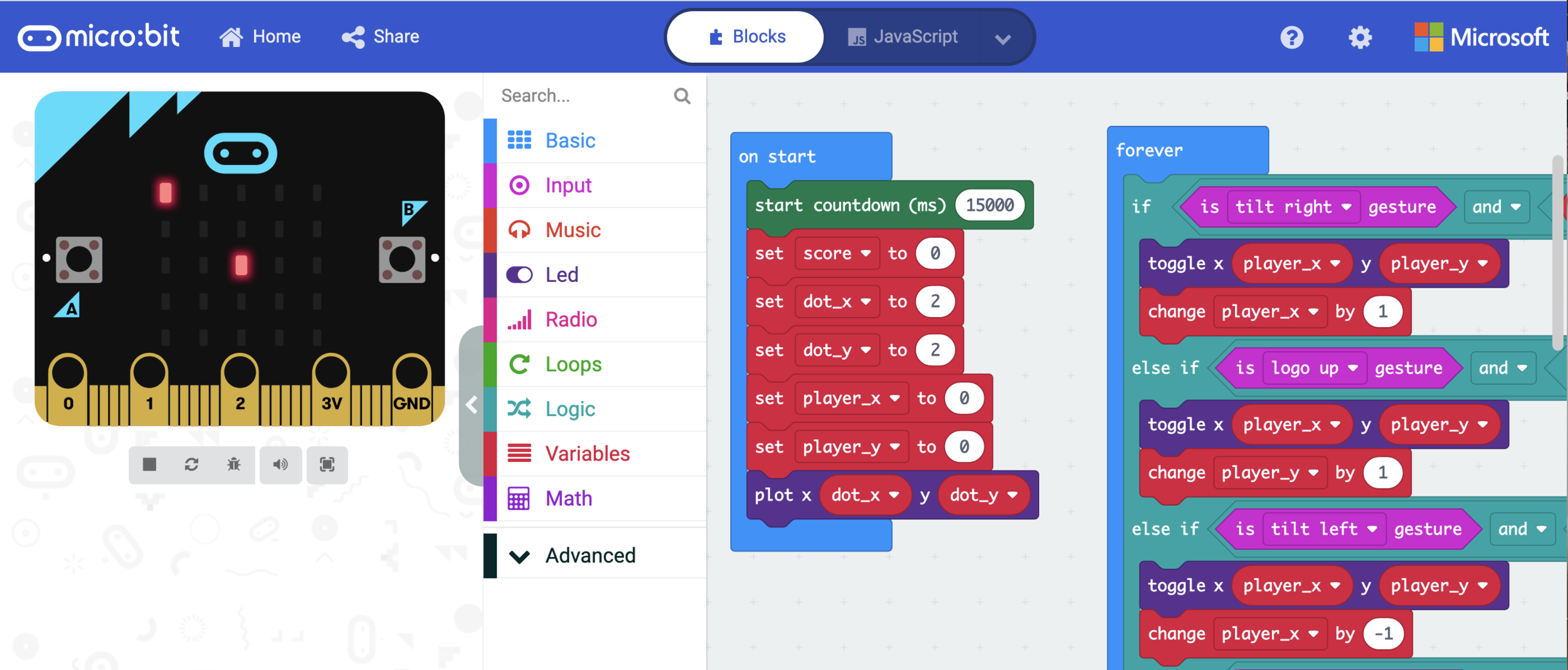Programming is often equated with digital products like video games, software applications, websites, databases, and more. But coding programs are not limited to the digital world. Coding programs, or software, are the brains behind a lot of electronic devices we use. In our programs, we like to integrate coding and physical devices so our students can see their work in the real-world. One of our favorite devices is the BBC micro:bit.
The BBC micro:bit is probably one of the most versatile tech tools we use in our programs. It’s compatible with a variety of code editors, languages, and devices such as Scratch, Python, Finch Robots, and much, much more. Plus, they’re a fairly accessible piece of tech when it comes to price. It’s possible to get one for personal use, as opposed to a classroom set, for $20 or less. So what is a BBC micro:bit exactly?
According to the Micro:bit Educational Foundation, “The BBC micro:bit is a pocket-sized computer that introduces you to how software and hardware work together. It has an LED light display, buttons, sensors and many input/output features that you can program and physically interact with. The latest micro:bit adds sound sensing and playback capabilities.”
It’s pretty cool. We’ve developed lessons where students can play a musical game by using the micro:bit to identify different parts of speech, and turned it into a pet using Scratch. In our upcoming virtual Bits ‘n Bytes Code Adventures series, we’ll be turning our micro:bit into a future predicting device, a special age calculator, and an arcade game.
Now, you may be wondering how we can do these activities in a virtual environment, especially when our students won’t have access to a micro:bit. Well, thanks, to Microsoft, our students don’t need a physical micro:bit to learn how to work with one.
Microsoft has developed a series of online block- and text-coding editors to combine coding programs with physical devices. Their MakeCode micro:bit editor has the typical block coding environment: a set of drawers of different block types and a workspace. But it also has a micro:bit simulator that lets users test out their program before downloading it to the physical micro:bit. While we don’t get that real-world interaction with our virtual classes, students are still able to learn how to use two new tools and get an idea of how their program would work on the device.


